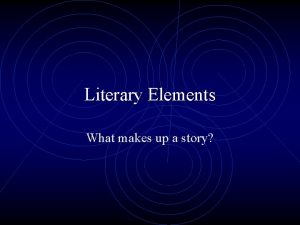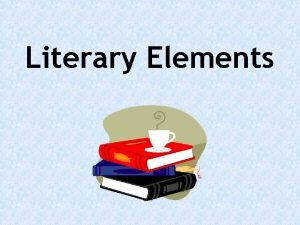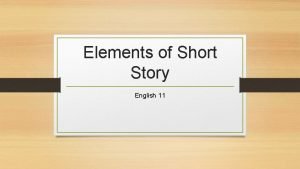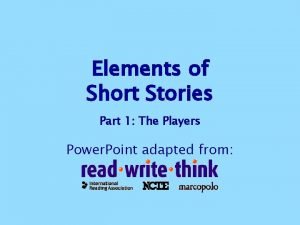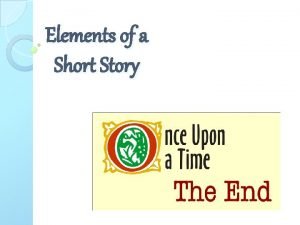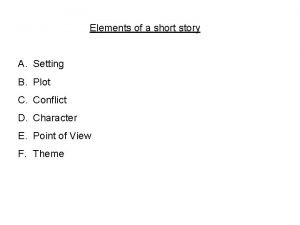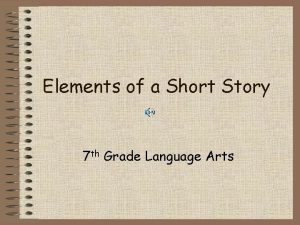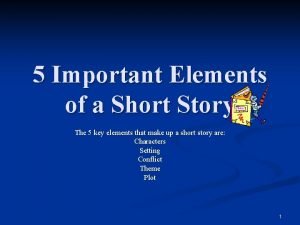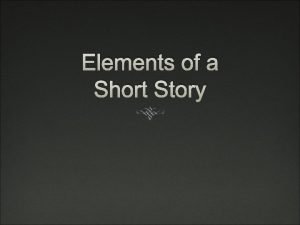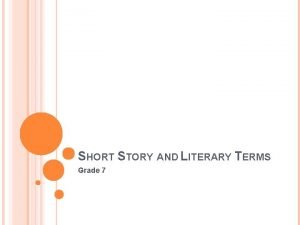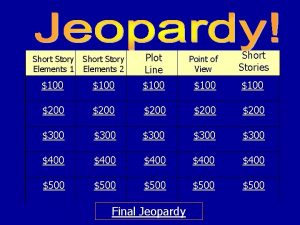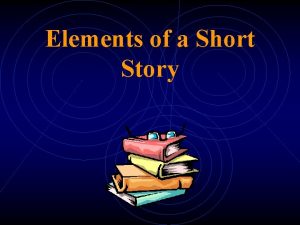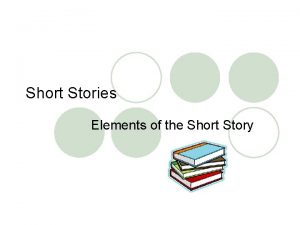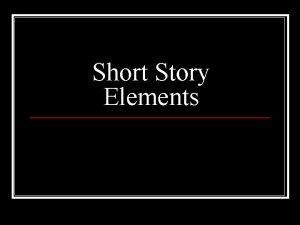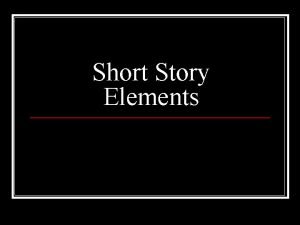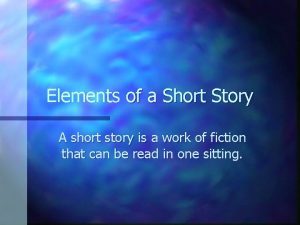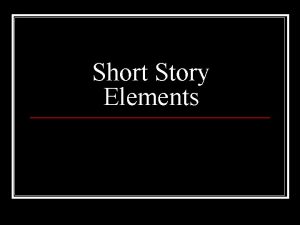The Short Story Elements of the Short Story











- Slides: 11

The Short Story Elements of the Short Story

Overview • • • Setting Characters/Characterization Point of View Theme Plot/Conflict

Setting Includes: · Time and place of action · Ideas, customs, values, & beliefs

Characters=Actors/Actresses in story’s plot • Protagonist: Main character • Antagonist: Character in conflict with main character

Characterization Development of personality of character • Three Methods – Dialogue – Action – Direct comment by author

Point of View Relationship of narrator to story · 1 st Person: narrator is character in story (“I”) · 3 rd Person Limited: limited thoughts revealed (“he” or “she”) · 3 rd Person Omniscient: reveals thoughts of all characters (all knowing)

Theme Central Idea/Message -perception about life or human nature · Stated themes: themes directly presented in the story (directly stated) · Implied themes: themes figured out by elements of story and life message

Plot Sequence of events in the story, often created through conflict.

Conflicts ·External conflict: conflict between character and outside force ·Internal conflict: conflict that takes place within the mind (internally)

Plot Most plots develop in 5 stages 1. Exposition: introduces characters, setting & conflicts 2. Rising Action: complications, twists, and intensification 3. Climax: high-point of story 4. Falling Action: result of climax 5. Resolution: final outcome of story

5 Stages of Plot Climax Rising Action Exposition Falling action Resolution
 Tall + short h
Tall + short h Short fiction story
Short fiction story Elements of a short story video
Elements of a short story video Elements of a short story
Elements of a short story What is the theme of a story examples
What is the theme of a story examples Elements of a short story powerpoint
Elements of a short story powerpoint Objective in story
Objective in story Short story for setting
Short story for setting 7 elements of a short story
7 elements of a short story Short story with 5 elements
Short story with 5 elements Identify the elements of short story. *
Identify the elements of short story. * Short stories for grade 7
Short stories for grade 7


